

 Smith-Madrone Vineyards & Winery is one of the oldest wineries in Napa Valley’s Spring Mountain District; it dates from 1971 with their first commercial release coming in 1977. For reference, there are approximately 70 wineries in Napa Valley who were producing wines in 1979 or prior who are still producing wines today. But today there are more than 1,000 commercial wine producers in Napa Valley. The name incorporates the owners last name as well as pays tribute to the Madrone trees that are common in this part of Spring Mountain. Some of the largest Madrone trees we have seen are located near parts of their vineyards. And Smith-Madrone has a nice ring to it rather than trying to combine something French such as Chateau Smith.
Smith-Madrone Vineyards & Winery is one of the oldest wineries in Napa Valley’s Spring Mountain District; it dates from 1971 with their first commercial release coming in 1977. For reference, there are approximately 70 wineries in Napa Valley who were producing wines in 1979 or prior who are still producing wines today. But today there are more than 1,000 commercial wine producers in Napa Valley. The name incorporates the owners last name as well as pays tribute to the Madrone trees that are common in this part of Spring Mountain. Some of the largest Madrone trees we have seen are located near parts of their vineyards. And Smith-Madrone has a nice ring to it rather than trying to combine something French such as Chateau Smith.
Two grizzled looking brothers, Charles (Charlie) & Stuart (Stu) Smith are the long-time owners and winemakers. Stuart put together a partnership with family and friends, and founded the winery in 1971. He has also taught numerous students in winemaking programs at Santa Rosa Junior College and Napa College over the years. Charles joined him two years later. It’s hard to imagine both Charles and Stu as young men, as their timeless look seems like from another century, but both men were in their 20s when they moved to Spring Mountain and built the winery, completing the structure in 1977.
Both came up from Southern California to attend the University of California Berkeley; Stuart graduated with a B.A. in Economics and Charles attended both UC Berkeley and San Francisco State eventually earning his teaching credential. Stuart was introduced to this property for the first time while studying for his master’s degree in enology and viticulture at UC Davis.
This winery is located at the end of a long narrow winding road, part of which is gravel. Visitors enter the road from Spring Mountain Road and then keep following several forks to the right side all the while watching for this wineries’ sign at each of the forks. Allow at least 20 minutes to get here from St. Helena. Many people who visit this part of Spring Mountain underestimate the time needed to get here as the roads are very windy and narrow.
Smith-Madrone owns 200 hillside acres and like several other Spring Mountain based wineries, their land offers spectacular views overlooking Napa Valley, neighboring vineyards and the mountains in the distance. One side of their property backs up to the Bothe-Napa Valley State Park. Their vineyards are between 1300 and 2000 feet in elevation and for the most part are planted on steep rocky red soils. This is an Aiken series of soil with a combination of both clay loam, sandstone and shale deposits. The property is planted to approximately 38 acres of grape vines including 6 acres each of Chardonnay and Riesling along with Cabernet Sauvignon, Merlot, Cabernet Franc and a small block of Petite Verdot. All their wines are made from their property. Occasionally they will sell grapes to other producers.
Because of their elevation the property sometimes receives snow in the winter. A particularly ‘heavy’ snowstorm visited the mountain in 1973, leaving nearly 2 feet of snow at the top of Spring Mountain and also in late February 2023 when nearly a foot of snow fell on the upper reaches of the Smith Madrone property.

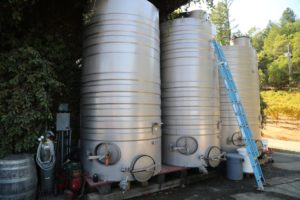
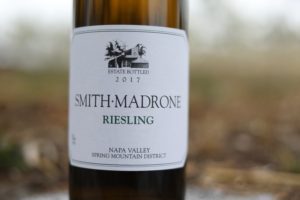 During their initial exploration of the property they discovered remnants of old vineyards and an old dirt wagon road which connected the city of Santa Rosa to the west with Napa Valley. In 1972 they planted their first vines including Cabernet Sauvignon, Chardonnay, Riesling and Pinot Noir – all on their own roots (not grafted to a rootstock). Eventually phylloxera, the tiny and devastating louse which lives in the ground, infested the roots and they replanted the vineyard to vines on phylloxera resistant rootstock.
During their initial exploration of the property they discovered remnants of old vineyards and an old dirt wagon road which connected the city of Santa Rosa to the west with Napa Valley. In 1972 they planted their first vines including Cabernet Sauvignon, Chardonnay, Riesling and Pinot Noir – all on their own roots (not grafted to a rootstock). Eventually phylloxera, the tiny and devastating louse which lives in the ground, infested the roots and they replanted the vineyard to vines on phylloxera resistant rootstock.
Visitors will see the original olives trees still growing just down from the winery; these are over 120 years old. Their property is bordered by Stony Hill Winery on the lower slopes of their property; Barnett Vineyards and Keenan Winery are also nearby neighbors. What started out as a hobby many years ago somewhere became a passion and turned into a serious business with their wines often winning medals and scoring other fairly high ratings. There is a board full of gold medals next to where you taste and as Charles says, “we throw out all the bronze and silver medals”. Perhaps not.
Their first big recognition came when they sent 2 cases of Riesling to the Wine Institute, which ended up being delivered to the American Embassy in Paris. As Charles said they were about out of capital at the time and needed a “shot in the arm”. This “shot” came in the form of the Wine Olympics (Gault-Millau Wine Olympiades) who secured their wine and other producers’ wine from the embassy. Six months after they sent their wine, unbeknownst to them, their 1977 Riesling had won in its category. This wine made headlines in the French papers and helped validate the quality of their wine and terroir.
In 1981 they donated a case of their 1977 Riesling to the very first Auction Napa Valley held in 1981 at Meadowood. And incidentally that first auction raised $330,000 of which $140,000 were donated to local hospitals.
Upon arriving at the winery during our initial visit many years ago, we found Charles in the barrel room washing wine glasses and he told us we would find his brother Stuart asleep in the truck “out back”. It is a unique experience just walking into the main winery building, which is part cellar, part laboratory, part workshop, part tasting room and stage, and part storage for older vintages. This winery is a contrast with the newer, fancier and opulent wineries that have become synonymous with Napa Valley. Tasting is always one on one with one of the Smith brothers (usually Charlie). They have been farming these vineyards for 50+ years and as a result, intimately know their hillside terroir.
They make several hillside grown wines, (all dry farmed), a Chardonnay, Riesling and a Cabernet Sauvignon. These wines are typically aged in bottle longer than most current releases at area wineries. This is certainly not a bad thing for the consumer. Smith Madrone should almost be called a Riesling house as this is the wine that they are most known for and have spent years perfecting. Sometimes they sell out quickly of this and may not have a bottled vintage available for tasting. The best way to acquire this wine is to join their mailing list. Also note that they do sometimes re-release older vintages of this variety to mailing list customers only.
Select Wines/Winemaking
Whites

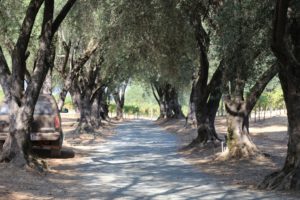
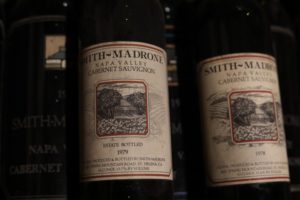 After all these years of producing Rieslings there are a few factors in their wines that tend to “work” from vintage to vintage. First of all, their pH levels tend to be extremely low – typically around 3.0+ with usually just under 1% residual sugar (near the threshold for where one can taste sugar). These wines pair well with food. As a result of the mountain complexities shown in their Rieslings and the wonderful acidity, these wines do also age very well. Charles told us their Rieslings can easily age 15 years, and often much longer. Riesling is such a versatile variety which can be paired with so many different foods. It is also a wine that can be enjoyed by a variety of palates. As Charles also says, “Riesling is a wine for both under sophisticated and over sophisticated drinkers!” He speaks reverently about aging this varietal, calling the qualities that develop over time in the bottle as “magical”. And he told us it is the easiest wine they produce, following a ‘straight line’ from vineyard to cellar to bottle (and it never sees any oak barrels during fermentation or aging).
After all these years of producing Rieslings there are a few factors in their wines that tend to “work” from vintage to vintage. First of all, their pH levels tend to be extremely low – typically around 3.0+ with usually just under 1% residual sugar (near the threshold for where one can taste sugar). These wines pair well with food. As a result of the mountain complexities shown in their Rieslings and the wonderful acidity, these wines do also age very well. Charles told us their Rieslings can easily age 15 years, and often much longer. Riesling is such a versatile variety which can be paired with so many different foods. It is also a wine that can be enjoyed by a variety of palates. As Charles also says, “Riesling is a wine for both under sophisticated and over sophisticated drinkers!” He speaks reverently about aging this varietal, calling the qualities that develop over time in the bottle as “magical”. And he told us it is the easiest wine they produce, following a ‘straight line’ from vineyard to cellar to bottle (and it never sees any oak barrels during fermentation or aging).
The 2017 Smith Madrone Riesling is deep gold color in the glass; this wine is highly aromatic even when it is deeply chilled; the bouquet offers sweetly fruited scents of both fruit and floral including honeycomb, honeysuckle and star-jasmine along with paraffin, apricot, yellow peaches in light syrup, pear, red apple and ripe and juicy mango at the peak of its ripeness (reminded us of being in Thailand during the heart of mango season and stopping at roadside stands picking out the ripest of the these fruits). As the wine evolves further in the glass, it shows a slight hint of oregano. Regardless of what you find hiding in this remarkable bouquet, you will be richly rewarded. The palate is just as intense as the bouquet and offers flavors of apricot, peach and a lingering lemon/citrus zest. Its texture is creamy which is balanced and complemented nicely by its bright and persistent acidity. And for our tasting, this is one of the rare white wines we actually used the Coravin on to save for later, rather than opening and giving away or even more tragically, putting it next to our dumpster for the hobo’s who often frequent.
The 2018 Smith Madrone Riesling is medium to deep gold in color; the initial aromatic we noted was saran wrap (showed this more than the previous vintage and it continues to express this for some time as the bouquet opens further) along with scents of apricot, dried straw, beeswax, papaya, Golden delicious apple, light chamomile and dried walnut husk (we spent our fall every year in our youth helping our grandfather and uncles harvest walnuts at their orchard in Dairyville in Tehama County, CA). This bottling is perhaps a bit more aromatically restrained than the 2017 vintage. Minerally, bright, and intensely flavored this wine delivers plenty of pleasure on the palate. There is a tug here between the lightly rounded texture and the acidity, with the acidity clearly winning. This bottling sports notes of lemon juice, honeydew melon, green apple and a light note of mint towards the finish. Its tangy, lively and mouth watering with a rich and long lasting finish. This bottling is going to age beautifully.
We have tried some of their earlier 1990s vintages of Riesling. One time, Charles popped open a bottle of 1994 estate Riesling for us; it was golden hued in color with so much fruit flavor after all those years. A 1993 we tried was absolutely delicious by itself with still plenty of flavor; this is a wine that will still be good for a number of more years. The nose showed slight diesel or petrol qualities that Rieslings of this age often develop as well as notes of freshly pulled saran wrap (sounds odd but doesn’t detract from the bouquet). Charlie has noticed that some vintages of their Riesling develop these qualities, but it doesn’t happen every year.
Smith Madrone’s Rieslings offer a nice balance between acidity, pH, structure and weight. It is this balance that is so important to not only their Rieslings but all their wines. During one of our visits Charles was filtering his 2006 Riesling so we sampled straight from barrel. These younger Rieslings show more fruit than the older vintages and this one had intriguing pear and other stone fruit aromas, along with honeysuckle and some noticeable mineralities. The younger vintages of these wines are very lively but do vary both in aroma and flavor from vintage to vintage.
The 2018 Smith Madrone Chardonnay is deep gold in color; the aromatics are pretty and offer a diversity of scents including honeycomb, caramel, crème brûlée, pineapple, marshmallow, vanilla, ginger and toasted nuts. The palate is bright with a noticeable richness and intensity of flavor including mandarin, pineapple, lemon juice and apple. The texture is supple and smooth. It lingers with notes of hazelnut and a rich tangy-like citrusy finish. Their Chardonnay is fermented in barrel (rather than tank) and this vintage was aged in 55% new French oak. One might think that both fermenting and aging Chardonnay in oak would pick up an oaky and or woodsy quality, but it does not; rather it inherits desirable secondary aromas and flavors from the barrel which add to the complexity of this bottling. Our definition of a balanced wine is a bottling that can be described by one word; seamless – where there are no sharp edges and nothing in particular stands out. This wine is the definition of balanced.
Some years Smith Madrone produces a rosé from Merlot and Cabernet Franc. When they first produced this wine, they left it on the skins overnight and noticed its bright color the next morning. They even jokingly thought about calling it, Radiation Red. Probably a good idea they did not.
Reds
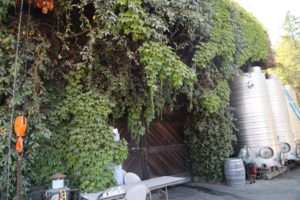
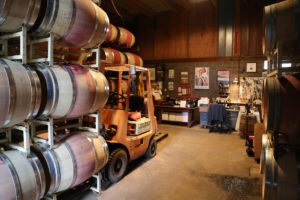
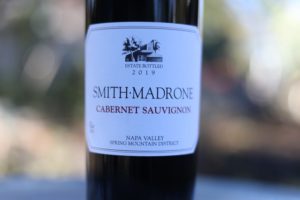 The 2019 Smith Madrone Cabernet Sauvignon is a blend of 83% Cabernet Sauvignon, 12% Cabernet Franc and 5% Merlot. It was aged for 18 months in 55% new French oak. It is dark ruby in color with purplish tinges along the rim of the glass; the bouquet immediately offers darker spices including of crushed peppercorn, a subtle green pepper note, more like Jalapeno (we have become intimately familiar this year with numerous types of peppers after frequent stops and purchases of such produce at Regusci farm stand in Napa Valley’s Stags Leap District), toasted oak and tobacco along with violets, dark plum and a mocha sweetness found deeper in the aromatics. The palate offers primarily red fruits (cherries and currants) anchored by a bright acidity. Unlike more robust contemporary mountain Napa Valley Cabernet Sauvignon bottlings, the tannins here are kept in check, are rounded, finer grained and are well-integrated into the seamless, dark, and savory finish (menthol, dried tobacco leaf and light notes of pepper). Smith Madrone crafts their wines to be enjoyable to drink in their youth but have all the characteristics to age for quite some time. And they want their wines to have a fun aspect, to continue to beg another sip. And this bottling in particular, Charlie simply calls, “goofy delicious”.
The 2019 Smith Madrone Cabernet Sauvignon is a blend of 83% Cabernet Sauvignon, 12% Cabernet Franc and 5% Merlot. It was aged for 18 months in 55% new French oak. It is dark ruby in color with purplish tinges along the rim of the glass; the bouquet immediately offers darker spices including of crushed peppercorn, a subtle green pepper note, more like Jalapeno (we have become intimately familiar this year with numerous types of peppers after frequent stops and purchases of such produce at Regusci farm stand in Napa Valley’s Stags Leap District), toasted oak and tobacco along with violets, dark plum and a mocha sweetness found deeper in the aromatics. The palate offers primarily red fruits (cherries and currants) anchored by a bright acidity. Unlike more robust contemporary mountain Napa Valley Cabernet Sauvignon bottlings, the tannins here are kept in check, are rounded, finer grained and are well-integrated into the seamless, dark, and savory finish (menthol, dried tobacco leaf and light notes of pepper). Smith Madrone crafts their wines to be enjoyable to drink in their youth but have all the characteristics to age for quite some time. And they want their wines to have a fun aspect, to continue to beg another sip. And this bottling in particular, Charlie simply calls, “goofy delicious”.
Their Cabernet Sauvignon bottlings age very well; a 1979 vintage that we tried, while having lost some of its fruit still had plenty of noticeable structure with a savory quality. The 2003 Smith Madrone Cabernet Sauvignon was 5 years old by the time we tried it. It is a very dark wine that is smooth on the palate and doesn’t go down the road of big, huge tannic finishes, rather the tannins are delicate and anchor a velvety mouth feel. This wine has dusty aromas, hints of cloves, flavors of plum and tobacco smoke on the finish.
Did you know that Smith Madrone used to make a Pinot Noir many years ago? Today growing Pinot Noir on Spring Mountain is the domain of only a select few producers. The reason they no longer grow this variety is it never consistently produced a wine of high quality each year although Charlie recalls their 1980 vintage as being particularly interesting.
Smith Madrone began producing a Reserve wine, called Cook’s Flat Reserve in 2007. This wine is named in homage of Spring Mountain pioneer George Cook; a part of their property is referred to as Cook’s Flat. This “reserve” wine is only made in years where the quality meets their exacting specifications. This wine contains a different blend than their typical Cabernet Sauvignon. This wine is structurally a more “Napa Valley” styled wine in that the fruit shows well at a young age, is riper on the bouquet with a soft plush entry showing very well-balanced fruit along with a tannin structure that lends itself nicely to early consumption. While this wine is styled similarly to their Cabernet Sauvignon, as Charlie puts it, “it just has more”.
And for perhaps the only time in their decades of making wine, they did not produce any wine from the 2020 vintage due to smoke issues related to the Glass Fire although it must be noted that in 2008 they did not produce any red wines resulting from fires in neighboring Sonoma County.
—
We have been here a number of times and can highly recommend the tasting and visit. If you want to really “escape” from the valley floor and have a very personable tasting experience one on one with the owners, it’s well worth your time to make the trek up to Spring Mountain. With winery owners who have the experience the Smith brothers have; even well-seasoned wine visitors will probably learn something about wine and vineyards that they didn’t know before.
And we will leave you with a random Smith-Madrone encounter we experienced while traveling overseas. A significant part of our work for the Napa Wine Project involves traveling around the state, country and planet visiting places and spaces connected through ownership or heritage to wineries or brands in Napa Valley. During time in Porto, Portugal to visit AXA Millesimes owned Quinta do Noval (the same owner of Outpost Winery in Napa Valley), we were relaxing along one of the stone walls bordering the Douro River in Porto. We happened to glance to our side at the right moment and immediately recognized Charlie Smith strolling by with his wife among the throngs of people. So of course, we flagged him down and had a nice conversation about travel and wine.
Total production each year is around 5,000 cases but has been as low as 3,000 cases and as high as 6,000 cases per year. In addition to selling direct to consumer, the wines are selectively distributed including in Germany. For more information, to purchase wines or to schedule a tasting, visit: www.smithmadrone.com

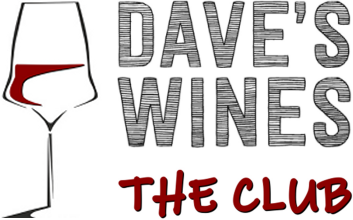





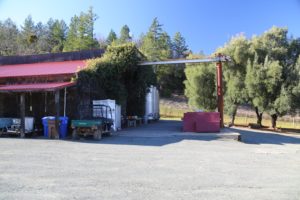
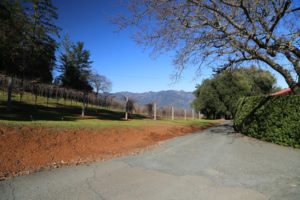

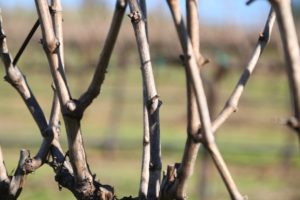
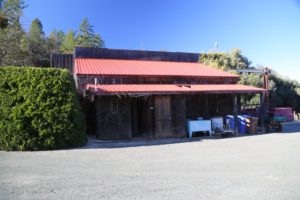

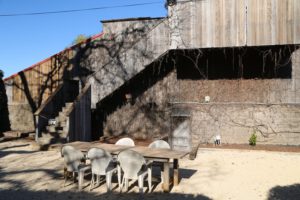
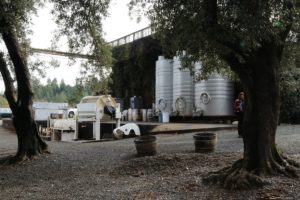
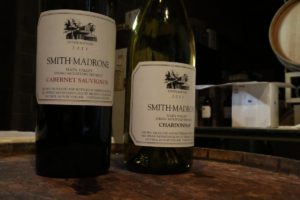

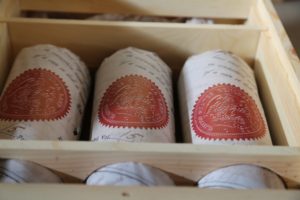
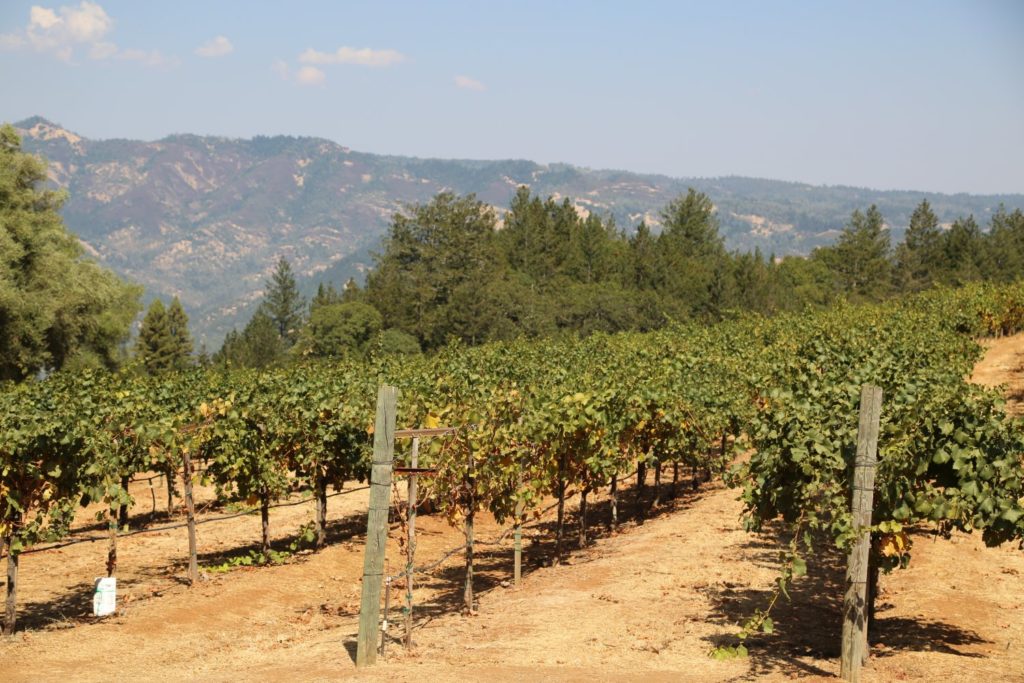
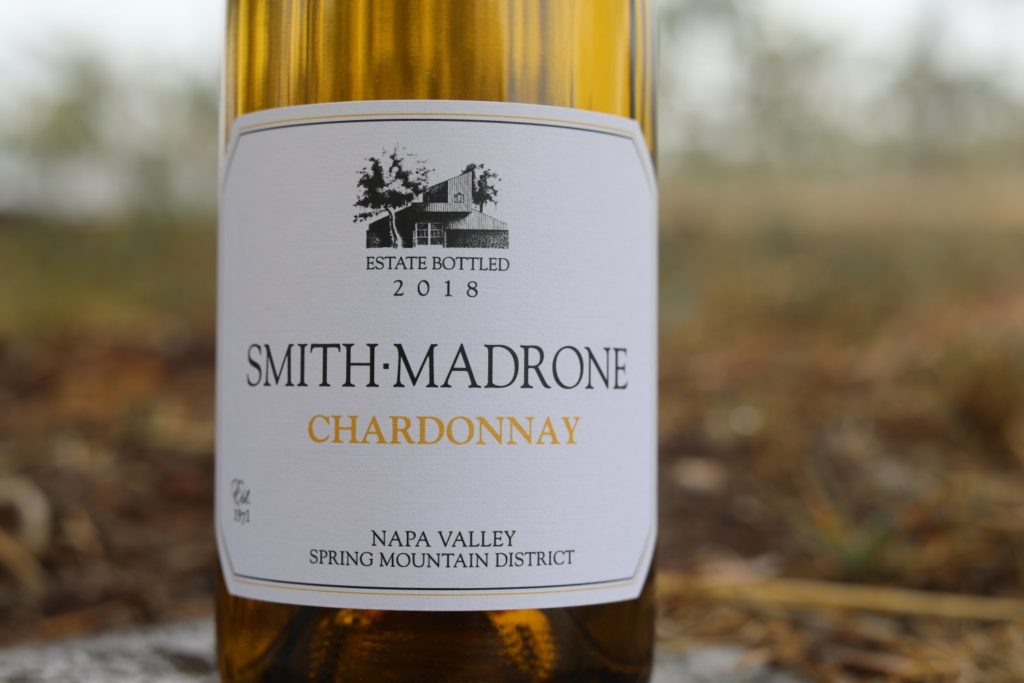
Doing some research on Smith-Madrone ahaed of a Wine event / tasting this weekend! Working with Tom 7 Rick here in Chicago. Regards, Steve
Steve – thanks for stopping by. Reminds me I need to get up there again soon. Its been to long.